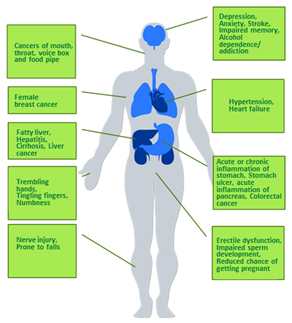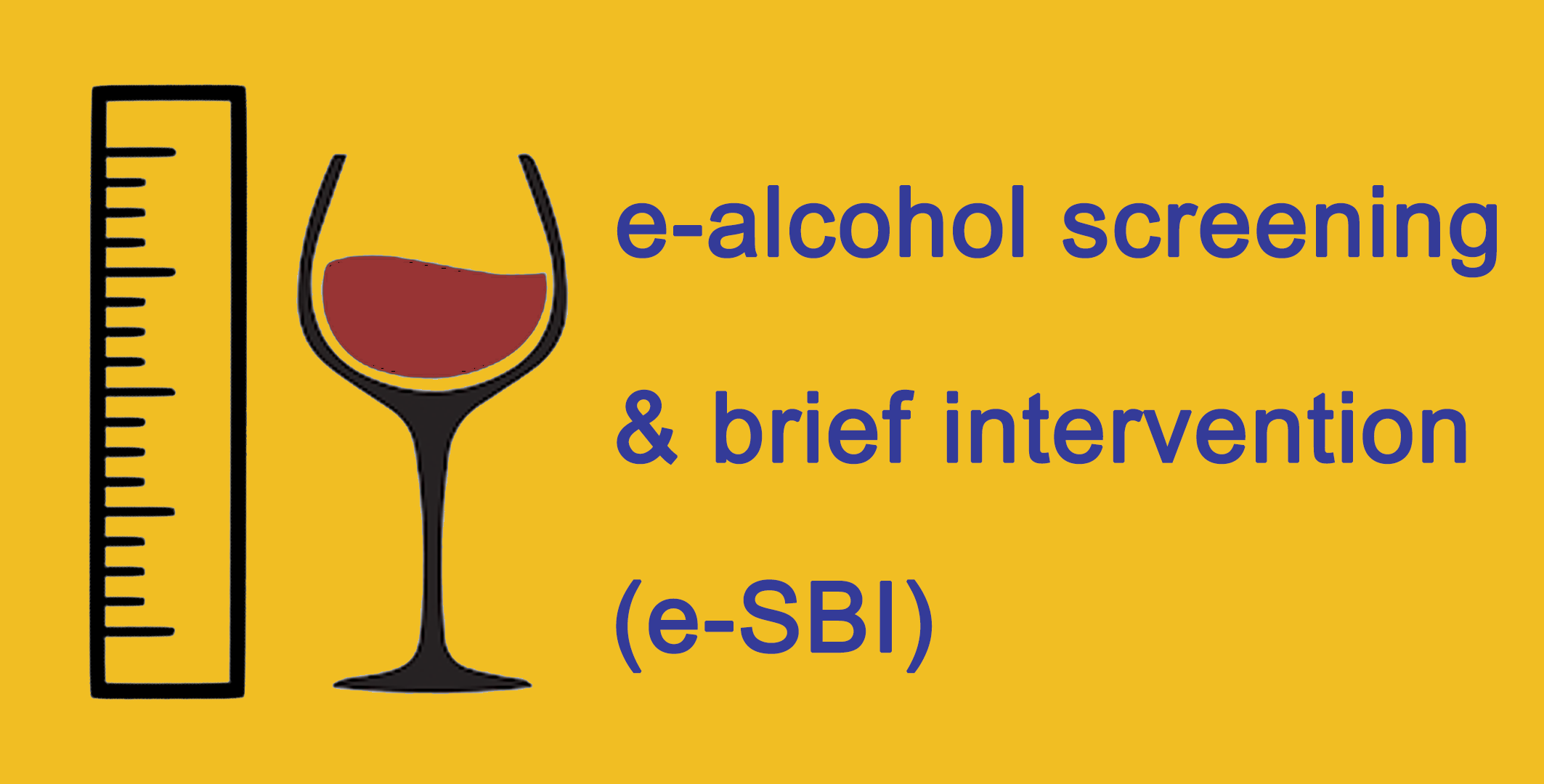Long-term Effects
 Alcohol is a toxic substance, which affects nearly every part of your body. The toxic effect of alcohol causes a wide range of long-term illnesses. Of note, alcohol is classified as carcinogenic to humans (Group 1) by the International Agency for Research on Cancer of the World Health Organization, because there has been sufficient evidence in humans that the consumption of alcoholic beverages causes many cancers, including certain common cancers in Hong Kong, e.g. colorectal cancer, breast cancer and liver cancer. The more you drink, the higher the chance you are to get these illnesses.
Alcohol is a toxic substance, which affects nearly every part of your body. The toxic effect of alcohol causes a wide range of long-term illnesses. Of note, alcohol is classified as carcinogenic to humans (Group 1) by the International Agency for Research on Cancer of the World Health Organization, because there has been sufficient evidence in humans that the consumption of alcoholic beverages causes many cancers, including certain common cancers in Hong Kong, e.g. colorectal cancer, breast cancer and liver cancer. The more you drink, the higher the chance you are to get these illnesses.
| Body Part or Function | Health Conditions |
| Heart (Note) | High blood pressure Heart failure |
| Brain | Stroke Memory loss |
| Liver | Liver cancer Cirrhosis Fatty liver |
| Breast | Breast cancer |
| Mouth and Gut | Oral cancer Colorectal cancer Acute and chronic gastritis Gastric ulcers |
| Sex organ and function | Impotence Impaired sperm growth Lowered fertility in women |
| Nutrition | Malnutrition, e.g. vitamin B deficiency Obesity |
| Mind | Depression Anxiety Insomnia |

Note
Some researches tell that drinking moderate amount may be associated to better heart health in certain populations (men over the age of 40, post-menopausal women and men living in Mediterranean countries), but evidence on such benefit remains controversial.
How alcohol increases risk of chronic diseases?
Long-term excessive use of alcohol leads to alcohol dependence. This problem not only adversely affects your health, but also influences the important components of your life, e.g. your work, your family and your interpersonal relationship.
The following shows the increased risks of morbidity/mortality of chronic diseases due to different amount of alcohol consumed every day:
| 12 g/day | 24 g/day | 36 g/day | 48 g/day | 60 g/day | 72 g/day | |||
| 1 | Cirrhosis and other chronic liver diseases | +24% | +106%* | +227%* | +367%* | +527%* | +843%* | |
| 2 | Tuberculosis | +10% | +53%* | +106%* | +154%* | +199%* | +251%* | |
| 3 | Pancreatitis | +7% | +23% | +47%* | +72%* | +122%* | +230%* | |
| 4 | Hypertensive heart disease | +5% | +32%* | +48%* | +61%* | +71%* | +86%* | |
| 5 | Atrial fibrillation and flutter | +7%* | +13%* | +21%* | +31%* | +41%* | +54%* | |
| 6 | Hemorrhagic stroke | +7% | +16% | +31%* | +46%* | +71%* | +97%* | |
| +3% | +11% | +34%* | +61%* | +97%* | +128%* | |||
| 7 | Ischaemic stroke | +6% | +16% | +31%* | +45%* | |||
| +15% | +30%* | +43%* | ||||||
| Legends: *Statistically significant change |
||||||||
Source: Lancet 2017; 390:1345-422
Note: In Hong Kong, a typical serving size of beer (1 can, 330ml, 5% alcohol content), a typical serving size of wine (1 serving glass, 125ml, 12% alcohol content) in restaurants, and most servings of mixed alcoholic drinks will contain about 12g of alcohol.
If you would like to know more about “How alcohol increases risk of cancer?” , please go to “Alcohol and Cancer” Web page for more information.
So if you do not drink at all, do not start drinking.
If you choose to drink alcoholic beverages, limit your drink to minimise alcohol-related harm.






































